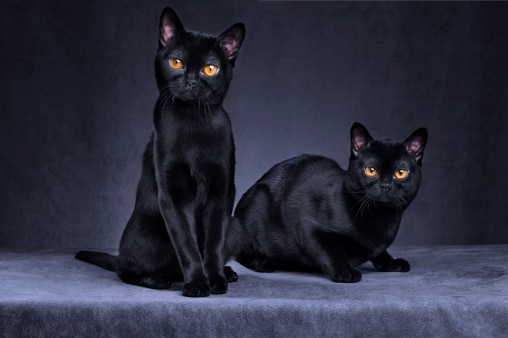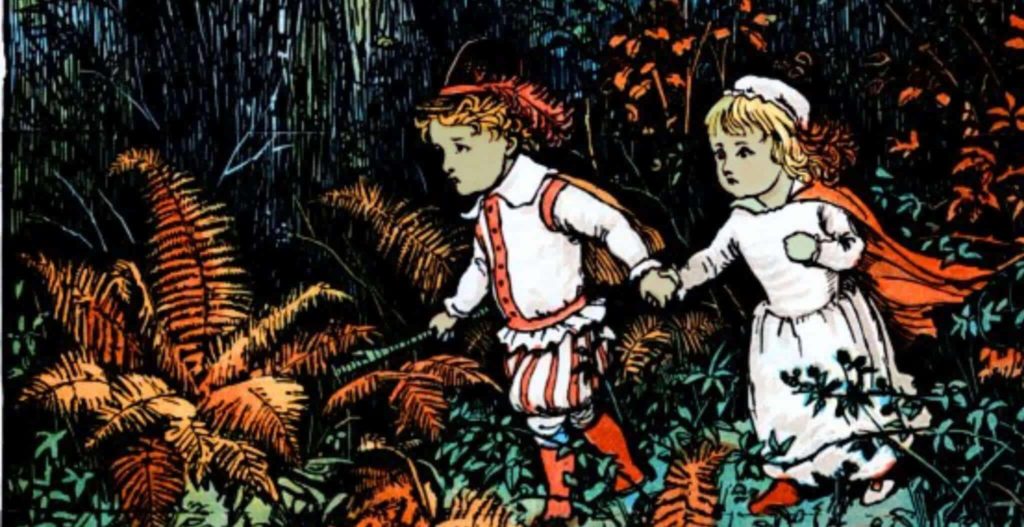Last updated on November 3rd, 2022 at 10:52 pm
There is no shortage of symbolism around black cats in the modern world. They are everywhere in popular culture as sidekicks or even malevolent beings which surround witches and other agents of the occult.
For example, in the first Matrix movie, when Neo has a moment of Déjà vu, an occurrence which means the sinister controllers of the Matrix have changed something, the sign that this is occurring is that he sees a black cat walk past twice.
It’s a foreboding warning of the peril about to ensue for him and his companions. Black cats even show up in a nefarious manner in Disney films.
In Cinderella, the Tremaine’s black cat is a pernicious figure that terrorizes the other animals and is called Lucifer. But when and how did black cats get their bad reputation? And why are there so many superstitions surrounding them?

The Revered Black Cat of Antiquity
It may surprise us today, but black cats were looked at quite favorably for much of recorded history. The Ancient Egyptians, in particular, revered cats, and the black cat was especially.
Representations of Bastet, the Egyptian goddess of health, were often in the shape of a black cat. Domesticated black cats for the residents of the Nile were seen as guardians against evil spirits and death.
Some cats were even mummified and buried with their owners. And this positive reputation continued for thousands of years. Moreover, the Romans continued to view black cats as a good luck symbol; down to the early first millennium AD, they were often carried on board ships to ensure the safety of the voyage.
This, though, may have been as much owing to a desire to root out rodents on board the ship as any belief in the intrinsic luck that black cats conveyed.
The Middle Ages: A Declining Reputation
So what happened to the reputation of black cats, and why did so many superstitions emerge surrounding them? The answer lies in the Middle Ages.
As Western Europe was reconquered from its Roman occupiers between the third and sixth centuries AD, Celtic and Germanic belief systems proliferated.
Many of these held that black cats were an evil force. For instance, in Celtic and Welsh mythology, monstrous creatures such as Cath Palug grew from black kittens and terrorized the people of Britain and Ireland.
As these beliefs permeated the Roman culture of Western Europe, black cats developed a reputation for bringing both good and bad luck.
However, this shifted again during the Late Middle Ages when the bad began to outweigh the good. In particular, the advent of the Black Death or bubonic plague across Europe in the mid-fourteenth century, which killed over one-third of the continent’s people in a decade, saw superstitions about black cats abound.
Many believed that the cats were delivering the plague to households and towns. There may have been some slight science to this. The plague was borne on a flea that arrived in Europe from Crimea on the back of rats.
Since cats are known to attack and kill rats, it follows that medieval observers would have seen a pattern between the presence of cats and the spread of the plague. As a result, concerns about the malevolence of black cats grew from the fourteenth century onwards.
Black Cats and the Witch Craze
This was further compounded by the growing concerns over witchcraft throughout Europe and the increasing associations between witches and black cats.
Despite the typical depiction of it as a medieval phenomenon, the obsession with witchcraft only really emerged from the thirteenth century onwards as the Middle Ages drew to a close.
Indeed previously, the medieval Roman Catholic Church had condemned belief in witches as a Pagan superstition, but attitudes changed from the thirteenth century onwards.
Black cats were soon associated with witches. In 1233 Pope Gregory IX even declared black cats to be an incarnation of the Devil himself. Bizarrely this set off a craze for hunting and killing black cats, and they became nearly extinct in some parts of Europe by the fourteenth century.
This association only became stronger in the centuries that followed as literature about witchcraft emerged from the fifteenth century onwards, the most significant text of which was the Malleus Malleficiarum, or The Hammer of Witches.
This extensive treatise surveyed the anatomy and powers of a witch and how to identify and interrogate one. One of the details it focused on was the concept of witches having ‘familiars’ or creatures that aided them in their malicious activity.
Black cats were soon viewed as possible familiars, though there were other creatures such as certain birds and even mythological creatures like goblins which were also deemed to be familiars.
These views only intensified in the sixteenth and seventeenth centuries when the witch craze was most intense in Europe and North America, with upwards of 300,000 supposed witches being convicted and executed.
At the height of the witch hunts, simply owning a black cat was enough to bring down suspicion on you or even get you killed for allegedly being a witch.
Modern Attitudes
Eventually, as with the witch craze, the superstitions surrounding black cats abated as the Scientific Revolution, and the Enlightenment gained ground in the eighteenth century.
Elements of the view of black cats as evil forces have survived down to the present day, but they are just as often balanced out by more positive images. For example, Felix the Cat, the mascot of a popular cat food brand, is a black cat.
Lisa Simpson’s succession of much-loved cats, christened Snowball I, Snowball II, and so forth, were black cats. There’s even a black cat appreciation society on Facebook, which has half a million likes. And the superstitions have commensurately abated.
As the famed comedian, Groucho Marx once said about the superstition that a black cat walking across your path could bring bad luck, “A black cat crossing your path signifies that the animal is going somewhere.”

